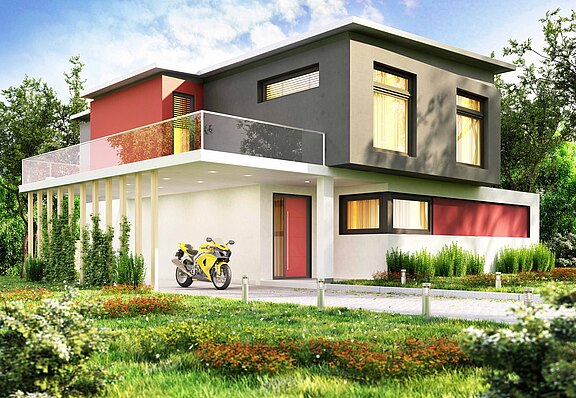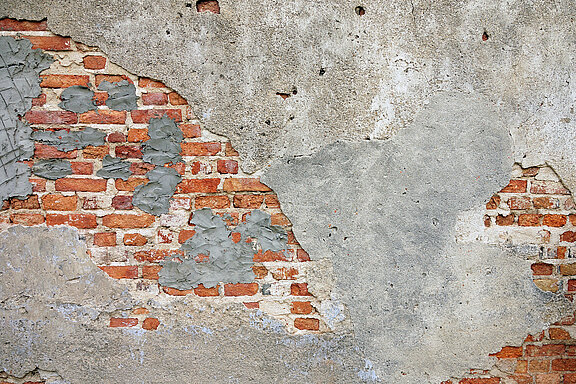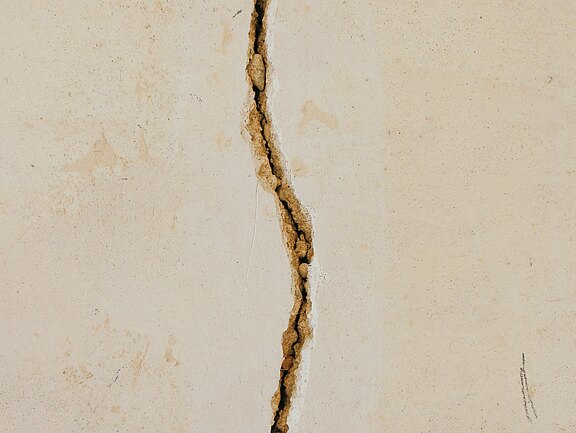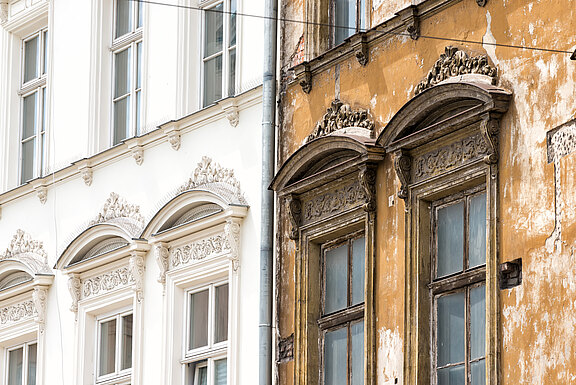
Thermo-ceramic façade paint with CLIMATE PROPERTIES
For long-lasting protection of the façade against moisture and all environmental and weather influences. Provides resistance to algae, fungal and moss infestation. Promotes and optimises the performance of existing ETICS façades. Also very suitable for dark colours.
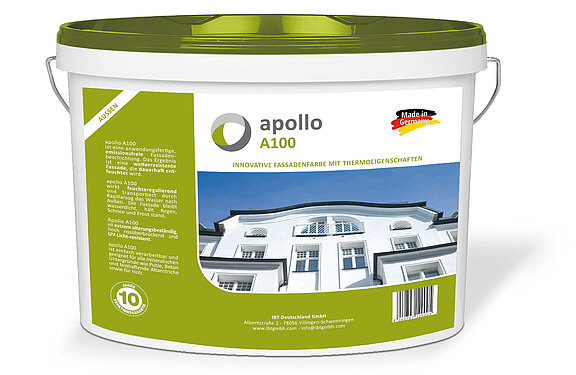
UV light
The destructive power of light
Short-wave sunlight - known as UV radiation - quickly destroys common resins that are added to commercially available façade paints to ensure their elasticity. After just five years, these become brittle under the influence of UV radiation. Fine microcracks appear through which water and damaging chemicals can penetrate the masonry.
Erosion
The interplay of wind and water
Wind, water and environmental toxins launch their all-out attack on building surfaces day after day. Unfortunately, this process is not only evident on old buildings such as churches and castles. As soon as the protective function of the paint is "dissolved", the plaster is attacked and moisture penetrates.
Temperature fluctuations
Facadesin the field of tension between heat and cold
often have to withstand drastic fluctuations between day and night temperatures, especially in spring and autumn. The problem often lies in the fact that the various building materials in the masonry expand and contract differently when the temperature changes. With conventional façade paints, this leads to cracks in the surface after a short time, which considerably limits the protective function of the paint. apollo A100 lasts. Our ceramic coating is based on an acrylate that has excellent elasticity and the ability to bridge existing cracks.
Moisture
Basic information about the "influence" of moisture
Every façade absorbs moisture from its surroundings. This is particularly noticeable in autumn and spring. A warm winter or a wet summer brings a lot of water into the façade. In winter, the frozen water in the façade cracks the plaster and cracks appear. This not only makes buildings look unsightly, but can also cause a range of consequential damage. Algae, moss and other traces of decay encourage further moisture ingress, ultimately causing permanent damage to the plaster.
With conventional façade paints, only the top layer dries. Only long periods of exposure to sunlight are able to dry the building structure. On the shady side, however, façades rarely or never become completely dry. The natural insulating effect of the building structure is drastically reduced. 4% building moisture already reduces the natural insulating effect of masonry by 50%. Dehumidification is therefore an important component in improving the energy balance of a building. A reduction in building moisture of just 1% can achieve an increase of 10% in the natural insulating effect!

